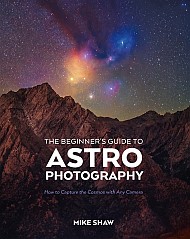Astronomy
Unpicking the genetics of fibromyalgia sheds new light on its causes
Unpicking the genetics of fibromyalgia sheds new light on its causes
Why Bird Flu Is Surging Again—And What It Means for Public Health
After a quiet summer, bird flu cases are rising again. Scientists expected the development, but what happens next is still uncertain
Bearded Vulture Nests Hold 600 Years of Human Artifacts in Spanish Caves
Cliff-rappelling scientists uncovered a crossbow bolt, part of a slingshot and 25 shoes in ancient vulture nesting sites
Why Aren’t All Comets as Bright as Comet Lemmon?
A comet’s brightness depends on how it’s made, how and when we see it, and even a bit of unpredictable luck
The Dangerous Data Gap in Pregnancy Drug Research
Despite the widespread use of medication during pregnancy, a lack of clinical research leaves patients and doctors navigating treatment with dangerously few data.
Teach-And-Repeat Driving Could Automate Lunar Cargo Delivery
Driving on the Moon for the first time has got to be an exhilarating experience. But driving the same path on the Moon for the 500th time probably won’t be nearly as exciting to whatever poor astronaut got stuck with that duty for the day. With that in mind, a team of researchers led by PhD student Alec Krawciw and Professor Tim Barfoot of the University of Toronto are working on a way to automate the mundane task of driving goods back and forth from a lunar landing site to a nascent lunar exploration base.
Are We In The Solitude Zone Of The Universe?
Are we alone? It’s probably one of the, if not the most basic questions of human existence. People have been trying to answer it for millennia in one form or another, but only recently have we gained the tools and knowledge to start tractably trying to estimate whether we are or not. Those efforts take the form of famous tools like the Fermi Paradox and the Drake Equation, but there’s always room for a more nuanced understanding. A new paper in Acta Astronautica from Antal Veres of the Hungarian University of Agriculture introduces a new one - The Solitude Zone.
This Week's Sky at a Glance, October 24 –November 2
The crescent Moon returns and waxes to first quarter. Two binocular comets are on the way out. And Arcturus is once again the Ghost of Summer Suns.
The post This Week's Sky at a Glance, October 24 –November 2 appeared first on Sky & Telescope.
Teenager builds advanced robot hand entirely from Lego pieces
Teenager builds advanced robot hand entirely from Lego pieces
Earth from space: Likouala-aux-Herbes river, Congo
Live Earth From Space Video from the International Space Station ( From The NASA ISS Live Stream)
We may finally know why birds sing at dawn
We may finally know why birds sing at dawn
ESA Is Simulating A Solar Storms For Satellite Operator Training
Threats from space aren’t always obvious, but statistically its only a matter of time before one of them happens. One of the most concerning for many space experts is a massive solar storm, like the one that literally lit telegraph paper on fire when it hit back in 1859. In the last 150 years our technology has improved by leaps and bounds, but that also means it's much more susceptible to damage if another event like the “Carrington Event”, as the storm in 1859 is called. Estimates for potential damage range into the trillions of dollars, with full economic recovery taking well over a decade if something isn’t done to mitigate the damage beforehand. As part of that preparedness, the European Space Agency (ESA) has started requiring the operational crew of new satellites, which would be on the frontlines of any solar storm catastrophe, to simulate how they would handle such an event, as described in a recent press release focused on one of those simulations.
Hurricane Melissa Could Drop Two Feet of Rain on Jamaica
Melissa is a Category 5 major hurricane and moving relatively slow—a brutal combination that will drench some parts of Jamaica with up to 40 inches of rain
Merged Stellar Pairs May Orbit the Milky Way’s Black Hole
The merged remnants of stellar pairs may orbit the Milky Way’s central, supermassive black hole.
The post Merged Stellar Pairs May Orbit the Milky Way’s Black Hole appeared first on Sky & Telescope.
Duck-Billed Dinosaur ‘Mummies’ Are Clay Molds Formed by Microbes, Scientists Say
Wyoming’s “dinosaur mummies,” once thought to preserve fossilized flesh, are actually detailed clay molds formed by microbes as the creatures decayed


